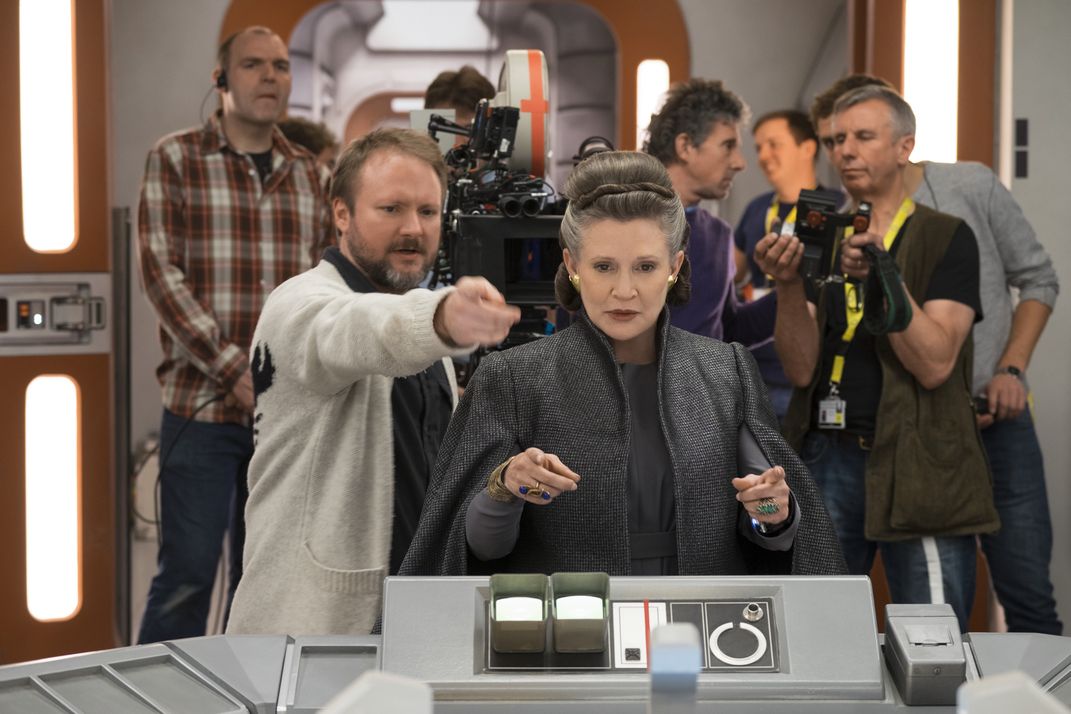The Science of Silence in ‘Star Wars: The Last Jedi’
The soundless lightspeed attack that baffled some fans was actually the film’s most scientifically accurate moment
:focal(2114x1657:2115x1658)/https://tf-cmsv2-smithsonianmag-media.s3.amazonaws.com/filer/28/8e/288e8712-f9b4-449c-b20a-c5762a79fe0d/collage.jpg)
(Editors’ note: Spoilers within.)
Since watching Star Wars: The Last Jedi, you’ve probably found yourself haunted by one singular question: What exactly is Luke’s relationship with that four-breasted, green-milk-spurting siren thing on the island of Ahch-To? But even if you’ve managed to make your peace with the now-notorious milking sequence, there’s another question some moviegoers have had on their minds: Why does an epic lightspeed attack take place entirely in silence?
Let’s start by setting the scene. In the second half of the film, Laura Dern's Admiral Holdo goes out with a bang, embarking on a hyperdrive-assisted kamikaze strike against Supreme Leader Snoke’s flagship, the Supremacy. Holdo’s ship is traveling close to the speed of light (186,000 miles per second); her target is stationary, a sitting duck. For roughly 10 seconds, as the two ships meet, all sound drops out from the film. What happens next is a sleek, slow-motion tableau of sci-fi carnage reminiscent of the elegant spaceflight scenes that graced Stanley Kubrick’s 2001: A Space Odyssey.
Yet in the case of Star Wars, the ramming scene left some confused. Unaware that the lack of audio was an artistic choice on the part of director Rian Johnson, a number of screening attendees complained about a “glitch” after the conclusion of the film. Staffers at two AMC movie houses faced so many fuming patrons that they put out signs, warning filmgoers that “The Last Jedi contains a sequence approximately 1 hour and 52 minutes into the movie in which ALL sound stops for about 10 seconds. While the images continue to play on the screen you will hear nothing. This is intentionally done by the director for a creative effect.” (The theaters ultimately decided to remove the “very silly” signs, reports Vanity Fair.)
In fact, that moment of serene space destruction was among the most scientifically accurate renderings of violence in the void ever to appear in a Star Wars film, argues Patrick Johnson, a Georgetown University physicist and author of the recent book The Physics of Star Wars.
Smithsonian.com spoke with Johnson, who has deployed his scientific expertise to answer other crucial questions including “When, exactly, does Star Wars take place?” and “How realistic are lightsabers and blasters, really?” Johnson had seen the new film—multiple times—and was more than happy to elaborate. “Sound,” he said—unlike light, which can travel as a transverse wave—“requires a medium to move from one place to another. And in space, there’s mostly nothing. So it doesn’t have a medium to move through, and it can’t propagate. Therefore, as the catchphrase for Alien was: ‘In space, no one can hear you scream.’”
In other words: sound requires air to get to your ears. No air, no sound.
Seeing Holdo’s bold ramming maneuver play out in silence, then, was satisfying to the scientist in Johnson. Generally, the sci-fi-loving professor just has to grin and bear it as blasterfire and thrusters wail improbably through the near-total vacuum of space. “That’s what it would be like for anybody watching that from afar,” says Johnson. “You watched the ship be there, and then not be there, and Snoke’s ship get cut in half. That is exactly what you would see from a different Star Destroyer.”

For Johnson, the Holdo scene also recalls the recent film Interstellar, which treats viewers to images of a spacecraft gliding past the behemoth of Saturn accompanied only by a recording of crickets, rain and thunder (which Matthew McConaughey’s character brought aboard with him to calm himself).
Of course, the scene still isn’t perfect. Air isn’t only necessary to facilitate sound waves; it’s also required for the chemical process of combustion, which is what makes all those incredible explosions the franchise is known for. So the explosions resulting from the Supremacy-Raddus collision might not be entirely believable, especially considering the insanely high energy of Holdo’s ship, which Johnson says would be more likely to atomize everything in its path than to produce humdrum bursts of fire.
However, Johnson does note that the bombs dropping onto the Dreadnought early in the movie would indeed explode (albeit not as dramatically as they do in the film) since there would be oxygen inside the ship’s hull to facilitate the combustion. “I would imagine that, due to the vacuum of space, once that first bomb blows a hole in the side of the ship, you would get a rush of oxygen coming out, and then a flame jet that would peter out pretty quickly," he says, adding: "This is just me speculating.”
There is one more Star Wars moment Johnson can offer his scientific backing for. When the bridge of General Leia’s cruiser is hit by (loud) enemy fire, she finds herself floating adrift in the calm of space. Thanks to the ever-mysterious Force, she is able to glide back to safety. But for a moment, she is suspended in the soundless vacuum. Setting aside the science-defying properties of the Force—Johnson postulates that a Force field trapping air around the general would have prevented the near-instantaneous boiling away of all the water in her body due to depressurization, and her subsequent death by freezing—Johnson says the silence here is also on point.
As long as there are Star Wars movies and as long as there are nerds, people will continue to ask persnickety questions of the franchise. At the end of the day, though, Johnson is forgiving of filmmakers. “I’m okay with having a spectacular explosion in movies,” he says, “because that makes for a more dramatic scene.” After all, while picking apart pedantic details can be an amusing exercise, he says, it is certainly inessential to one’s enjoyment of the work. “Ultimately,” he says, “they’re trying to make an entertaining piece of culture, rather than a 100-percent-accurate scientific document.” And that doesn’t require a PhD in physics.
/https://tf-cmsv2-smithsonianmag-media.s3.amazonaws.com/accounts/headshot/DSC_02399_copy.jpg)
/https://tf-cmsv2-smithsonianmag-media.s3.amazonaws.com/accounts/headshot/DSC_02399_copy.jpg)